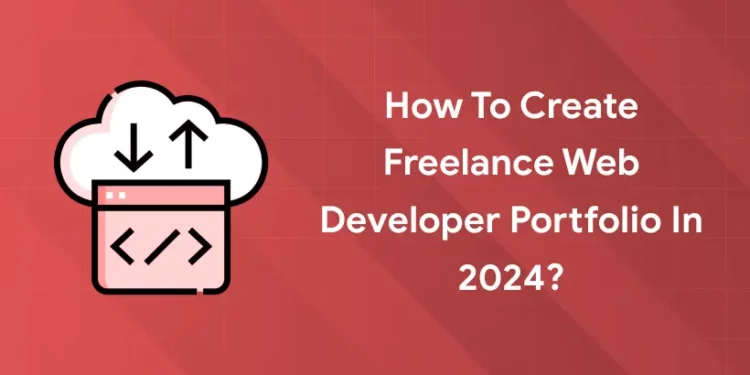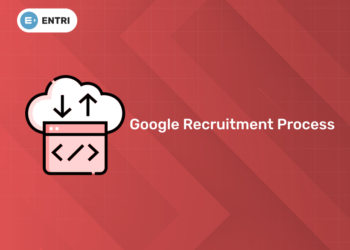Table of Contents
Are you new to the web development industry? Or are you new to the world of freelancing? In both these worlds, there is one thing that you need to catch the eyes of recruiters or clients. It is none other than a well-made web developer portfolio. We can even say that a unique portfolio is essential for landing a web development project when you are a freelancer. That being said, it is not easy to create a portfolio, even if you are a developer with years of experience. This article will provide you with the necessary guidelines if you are going to build a new portfolio or are in the process of improving an already existing one. In this article, we will discuss every important thing that will answer your question about how to create a freelance web developer portfolio in 2024 and attract potential clients.
Click here to register for the online full-stack development course offered by the Entri app!
What Is a Web Developer Portfolio?
A web developer’s portfolio means a website or document containing a collection of their best projects that showcases their ability to build a website. A web developer having a portfolio is more likely to be selected because the portfolio gives the to-be employer or client a good idea of the skills and achievements of the said web developer.
Why Need to Create a Web Freelance Developer Portfolio?
1: Which of the following is a JavaScript framework/library?
Does a web developer need a portfolio at all? This is still a hot topic of discussion in the tech sector. some of the highly successful seniors might say that they never needed one and they have got their job with just a resume, coding challenges and Github history. But it is better if you make a portfolio for the following reasons.
- Improves your chances of getting hired by showcasing your best work
- Clients can contact/ find you easily
- Increases the trust building with the targeted clientele
- Passive marketing for your skills
Want a new career? Register for the online full-stack development course offered by the Entri app!
 Start Coding Today! Enroll Now with Easy EMI Options.
Start Coding Today! Enroll Now with Easy EMI Options. 

Get Hired as a Full-Stack Developer: Master the Skills Employers Are Looking For!
Start Learning With EMI Payment OptionsWhat Should You Include in The Web Developer Portfolio?
For better results, achievements and creating a good impression, the following things should be added to a web developer portfolio.
Homepage
The homepage is the first thing that an employer or client might see. So, it must be eye-catching i.e. instantly capture the attention of the viewer. This is where first impressions are created.
Skills Page
Your technical skills should be listed on the skills page. An example of listable skills is provided below.
- Coding skills: Here you have to list your knowledge in various programming languages, other frameworks in the tech stack and your ways of implementing of this knowledge.
- Tools proficiency: this refers to your skills in using a variety of web development tools.
- Visual Design: Even though companies mainly hire a web developer for the web for web design-related tasks in a project, possession of knowledge in the field of user interface and user experience will make you more competitive in the job and freelancing market.
Listing the tech skills is not enough. Any cooperate job comes with the necessity of having some essential soft skills. They also should be mentioned in your list on the skill page. Some skills that can be listed there are provided below.
- Problem-solving skills
- Team player
- Attention to detail
- Good Communication skills
- Adaptability
- Good time management skills
Projects Page
The main intention behind the creation of a portfolio for a web developer is to showcase their skills. This is only possible if the clients or employers can view their previous projects there. While adding the projects to the project page be careful and choose only the most excellent and unique ones among your works that give a good description of your skills to a viewer. Each entry on a project page should come with the following things.
- Short description: Website name and a brief description of its purpose.
- Background: A brief description of the time frames, tools used and coding process in the said project.
- Visual representation: Here you should add videos or screenshots of the final product. It is better to add the links to the original websites itself if possible.
About Page
Include a high-quality photo and maintain a professional yet personal touch. Who are you? Where do you come from? Which kinds of clientele do you serve? What is your major advantage when working with you?
Services Page
Describe in detail the kinds of solutions you provide. Pay attention to benefit-driven descriptions rather than your resume.
Contact Page
Make it simple for others to contact you! Provide your phone number, email address, LinkedIn account, and, if desired, a contact form.
Resume
Another very important thing to add to the portfolio is your latest resume. It is good to add a good resume along with other things even if the portfolio website itself acts as a CV. Including one in your web portfolio can let prospective employers and clients evaluate your skills and background more quickly, allowing them to determine whether you would be a suitable fit for their business.
Your accomplishments, employment history, education, and background should all be briefly mentioned on your resume. When writing your resume, use the following advice to increase your chances of being invited for an interview.
- Take user experience into account: To promote a positive reading experience, apply user experience (UX) design best practices by utilizing a simple layout, easily readable typefaces, and crisp content.
- Use appropriate keywords to enhance your writing: Recruiters may utilize applicant tracking system (ATS) technologies to sift resumes because of the volume of applications. Make yours stand out by optimizing it with keywords linked to web development.
- Add personality: You can establish a stronger connection with hiring managers and prospective clients by bringing some personality to your work.
Learn full stack development from experts! Join the Entri App today!
How to Create a Freelance Web Developer Portfolio in 2024
After you have learned coding from your boot camp, attained necessary certifications in the web development field and done sample projects and internships, the next essential thing to do to attract clients is to create a freelance web developer portfolio. But for this, you should have a clear idea of how to create a freelance web developer portfolio. Thinking that a mere resume or LinkedIn page is enough to boost your career as a freelancer is ill-advised. An increasing number of people are becoming interested in careers in web development as the sector advances. Making a developer portfolio is therefore essential to differentiating yourself from the competitors.
Make Sure the Code Works Well
Among the essential pages to be added to the portfolio, we have mentioned the project page where the links to projects should be added. While checking out those projects, some clients will examine the back-end aspects of the site and how they are built. So always ensure that the code you used for the listed project works well. Additionally, make sure all of the pages, buttons, images, and links on your web developer portfolio website are functioning properly by visiting it frequently.
It’s not hiring managers and prospective employers who should be the first to detect problems, but you. Seeing the bad functionality of a project creates the opposite of the intended effect on employers. So, ensure the code is clean and everything works and avoid accidental bad impressions being created in the minds of the hiring team. Check out the online full-stack development course offered by the Entri app to improve your coding, code proofreading and troubleshooting skills. Study with expert mentors, recorded and live sessions and live projects.
Ensure Responsive Design
Moreover, a responsive design is essential. See how your website appears on various screen sizes by using tools such as Responsive Design Checker.
Quality over Quantity
Share only the best of your projects on the project page. Here, quality over quality should be your mantra. It might be easier to just do all the projects that you have done to date, but this is not recommended. No recruiter has the time or patience to go through 20 website projects. They will examine a few listed at the beginning of the list. But they might not be your best work. So always list only the best works. Make sure that the projects you list can prove your skill in the niche-focused by the recruiter.
The key to good portfolio creation is not to go overboard. So, compile a modest list of your greatest and most current work across a variety of industries. This will prevent you from seeming less experienced to recruiters or confusing them with too many listings. But there should be a fine balance between the diversity of projects and the kind of projects you want to attract in the future. It is best to list 8 to 10 projects according to HR experts.
Share the Motivation
Just the resume and project list might not be enough. It is better to share the challenges you faced and the motivation behind each listed web development project. When creating websites, walk prospective employers through the process rather than just showcasing the finished product. The hiring manager can evaluate your creative thinking, problem-solving abilities, and thought process with this method. You want to highlight a few characteristics that set the project apart from others.
Remember to strike a balance between casual and technical tones so that individuals from every background can easily understand it.
Customizing the Pages
If you want your portfolio to stand out, think about developing unique pages that defy the conventions of grid design. Some more pages below can be done besides the important ones that we previously discussed. Some of the custom page options are given below.
- Blog pages: Add write-ups such as tutorials and the latest innovations to show you knowledge. Then implement good SEO practices so that these blogs will drive traffic to the website.
- Testimonials: Compile testimonials from previous customers and employers and post them on your website. It may aid in persuading hiring managers and freelancing clients that you are the ideal candidate for their position.
- Frequently asked questions: Look for frequently asked questions regarding web development and post the answers on a page just for those questions. Individuals who find your responses useful may become your clients.
That same holds for the photos you select. Although it may be tempting to use generic photos, using original photography and personalized artwork are much more striking.
User Experience
User experience is very important for any website. The website for your portfolio should be simple to use, navigate, and read. Use an information architecture (IA) that is easy to navigate and a user-friendly interface to make it easier for visitors to access critical information, including the projects and contacts pages.
Showcase Variety
People tend to put their favourite niche websites only when listing their projects on the project page. But this is a bad idea. It is best to show that you have worked with a broad variety of clients. This will show your versatility. It will also ensure that people from different industries of the range of things you are capable of. This is particularly helpful if you wish to branch out into other niches. The broader the content of the list the broader the variety of people who will hire you.
Join the online full stack development course offered by the Entri app! Get hired faster!
Steps for Creating a Web Developer Portfolio
There are certain steps for building a portfolio. They are listed below.
- Think about the target audience and niche you want.
- Conduct your research and understand what clients want
- Then choose your technical set-up and tools
- Start coding the portfolio website from scratch
- Use a content management system like WordPress
- Choose and register a domain name for your site
- Understand that URL and website domain name are part of your brand and choose accordingly
- Set up your web hosting after you register your domain name
- Select a good and simple portfolio design
Join the best online full stack development course offered by the Entri app! Register now!
How to Create Freelance Web Developer Portfolio FAQs
- Is it necessary for a web developer to have a Portfolio?
Yes. It is essential for a web developer, be it someone who is looking for a 9 to 5 office job or someone doing freelancing, to have a good portfolio because the portfolio shows the experience and skill a developer has and the quality of their projects. This will help them get hired more easily.
- Where should a web developer host their portfolio?
A web developer can host their portfolio on platforms such as Behance and GitHub. But building a portfolio website is the best way to choose.










